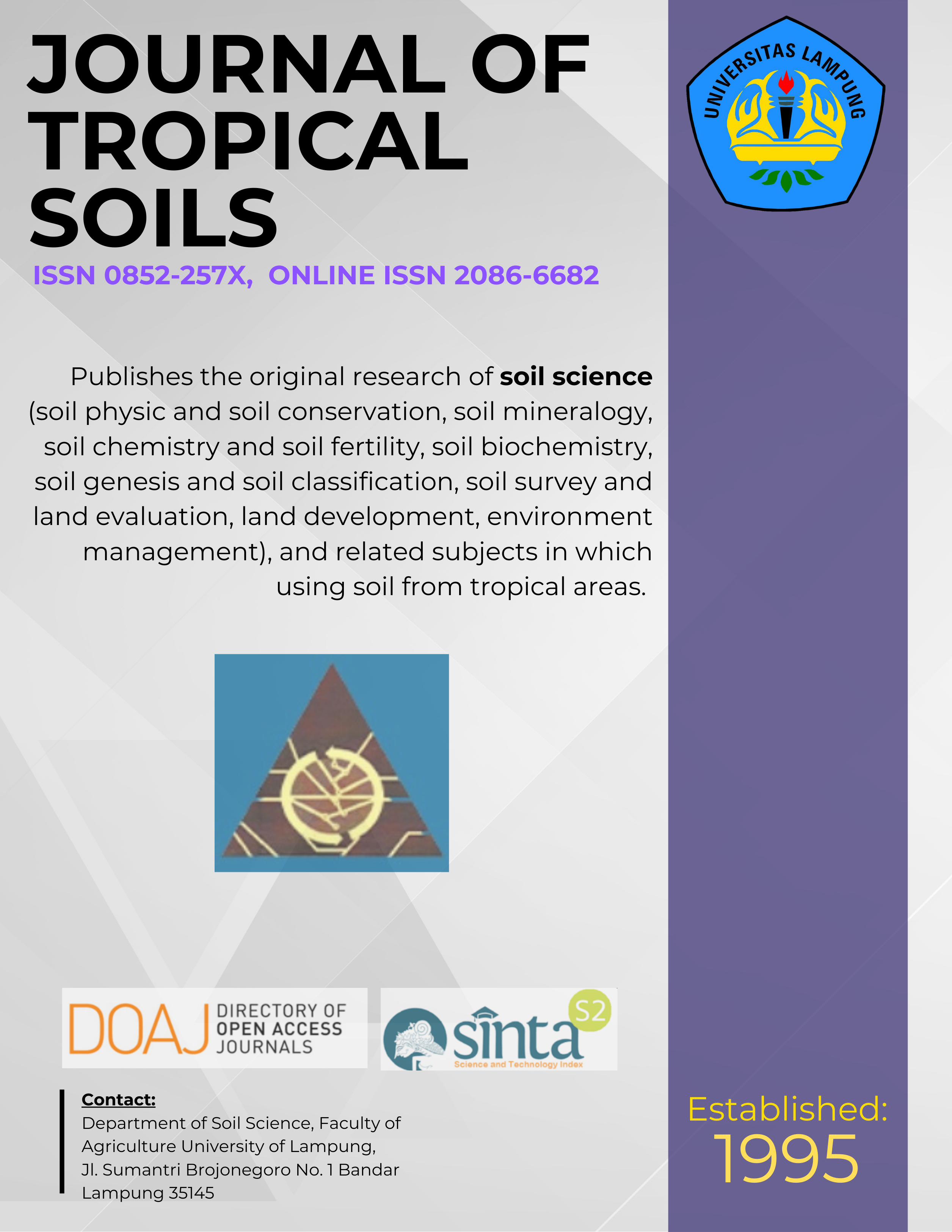Extreme High Yield of Tropical Rice Grown Without Fertilizer on Acid Sulfate Soil in South Kalimantan, Indonesia
Main Article Content
Abstract
Extreme High Yield of Tropical Rice Grown Without Fertilizer on Acid Sulfate Soil in South Kalimantan, Indonesia (E Purnomo, Y Hashidoko, T Hasegawa and M Osaki): Local rice arieties are commonly grown by the farmers located in acid sulfate soil area of South Kalimantan. In South Kalimantan, more than 100 local rice varieties can be found. In 1999, a farmer found one hill (with 5 tillers) rice plant near a canal, later called Padi Panjang. The rice had panicle length of 50 cm. The panicle length of common local rice varieties are 25 cm. Since the finding, the farmer multiplied the seed for 3 years to get a reasonable amount of seeds for nearby farmers to use. In 2004, there were 25 farmers grow the Padi Panjang by themselves. Their paddocks are widely spread out in Aluh-Aluh and Gambut districts. We take this opportunity to investigate yield variation of the Padi Panjang that may be affected by soil properties variability. Ten paddocks out of the 25 paddock were selected. At harvest time (in July-August), we measured the rice yield and collected soil sample from the 10 paddocks. We found that the soil condition in the selected paddocks were marginally suitable for growing improved rice. Without fertilizer, however, the rice yield varied from 3.21 to 8.09 Mg ha-1. We also observed that the rice yield variations associated with tillers number. We did not find any correlation between rice yields with some selected soil properties, except it was observed that the tillers number was negatively correlated with soil electrical conductivity (EC). The extreme yield of Padi Panjang might be explained the involvement of N fixing bacteria and P solubilizing bacteria, large rooting system and the ability of Padi Panjang root in modifying the rhizosphere soil.
Downloads
Article Details
License for Authors
Authors who publish with this journal agree to the following terms:
- Authors retain copyright and grant the journal right of first publication with the work simultaneously licensed under a Creative Commons Attribution License that allows others to share the work with an acknowledgement of the work's authorship and initial publication in this journal.
- Authors are able to enter into separate, additional contractual arrangements for the non-exclusive distribution of the journal's published version of the work (e.g., post it to an institutional repository or publish it in a book), with an acknowledgement of its initial publication in this journal.
- Authors are permitted and encouraged to post their work online (e.g., in institutional repositories or on their website) prior to and during the submission process, as it can lead to productive exchanges, as well as earlier and greater citation of published work (See The Effect of Open Access).
License for Regular Users
Other regular users who want to cite, distribute, remix, tweak, and build upon author’s works, even for commercial purposes, should acknowledge the work’s authorship and initial publication in this journal, licensed under a Creative Commons Attribution License.

